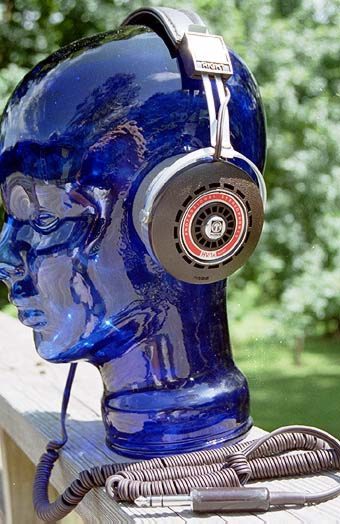Site Map Use the dropdown bar to navigate.
|
Site Map Use the dropdown bar to navigate. |

One of the most overlooked aspects of home electronics gear is the idea of maximizing the quality of the products you've already invested in. Once people get their system up and running, it pretty much remains untouched - except for volume - until something breaks or needs to be replaced. But there are often many improvements you can make to your system that will make it perform better and won't cost too much.
Its true, you'd have to be pretty life-free to get excited when you come home and find a new telephone directory delivered, but for the true hi-fi enthusiast things can get sadder. The arrival of a catalogue from one of the major electronics components manufacturers - be it Tandy, Maplin, RS Components or one of a number of rivals - is a good excuse for an evening of intense study and a lot of 'what if…' thoughts. They fit the bill, being distinctly Yellow Pages in bulk, but what they lack in an impressive cast of characters they more than make up for in hi-fi possibilities.
No we're not talking about gutting your amplifier, CD player or whatever and replacing major components, but rather the huge range of accessories and widgets, all there to solve your hi-fi problems. From making biwiring or biamping simple to expanding the number of inputs on the crowded back-panel of your amp, there's something there for everyone. And while the use of switchboxes and the like may not have the purists jumping up and down with joy, if they enable you to get the most from your system, who are we to argue?
Take the two subjects that I get the largest amount of email questions of all: biwiring/biamping and AV connectivity: if you don't have all the right ins and outs, either can be a nightmare. But these catalogues can solve all these problems for very little money and a minimal degree of DIY, whether it's with stacking banana plugs to let you put those two runs of cable into the back of your amplifier, or multiple SCART adapters, some with auto-switching, to enable the connection of VCR, DVD and satellite receiver into the back of older TVs.
When it comes to biamping, things are made simple: provided your amplifier has preouts, there are more than enough Y-adapters to enable you to connect as many power amps as you like. And not just cheapo 'grey wire' devices: the catalogues offer hard-wired metal splitters, gold-plated and capable of good results. These would also come in handy if you have a multiroom set-up, or are planning to improvise a system with speakers and/or amplifiers in two different rooms: any piece of equipment can be adapted to feed signal to two different amps.
Similarly, a simple switchbox will add inputs or outputs to any amplifier - a big problem with the proliferation of stuff you're likely to want to connect - with more complex models offering a variety of routings of signal between the components connected to it. No headphone socket? Well, you could buy a dedicated amplifier, or you could just put a switchbox on a spare pair of speaker outputs, or even between your amp and speakers in extreme circumstances, to do the trick. And how about a simple single-source system? You could buy a volume potentiometer and some phono sockets, mount them in a little box (also from the catalogues), and use this between your CD player and a power amp for as minimal a combination as you can get.
Take, for example, one of the must-haves for any home theater system: the RadioShack SPL meter (sound-pressure level). Almost every A/V receiver has its own test-tone function for balancing the volume output of your speakers. That's great, but who knows what white noise is supposed to sound like at different points in the room? No, this is a job that calls for a professional, and that is the trusty SPL meter. It will give readings (in decibels) of the output volume of each speaker while you sit in the primary listening position. Then you can adjust your system so each speaker delivers the same output to your ears - because that's where the sound is most important. Perfect system balance, and the meter costs only around £50. Plus, you can use it for every system in the house, and keep them all in fine tune.
Another novel idea that gives your system a certain amount of character is to use a Glass head for storing your headphones as seen here.

Mick Evans 1999-2001
[email protected]